Homepage of the conference CS21
ROLAND GLOWINSKI'S BIOGRAPHY:
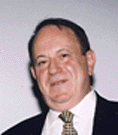
|
Roland Glowinski's research achievement Homepage of the conference CS21 ROLAND GLOWINSKI'S BIOGRAPHY: |

|
(Text extracted from the dedication written for the conference book by William E. Fitzgibbon, University of Houston and Jacques Périaux, Dassault Aviation).
Roland was born in Paris in 1937, the son of Polish immigrants. The symposium in the Loire Valley has particular significance for Roland for it is here that he spent the difficult years of World War II. These years were extremely perilous for the Jewish people, and Roland, with his brother Albert, joined the legions of children of Jewish extraction who were protected by the French people.
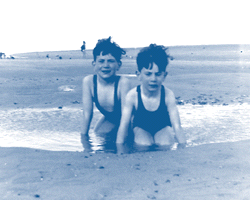
Upon his return to Paris, Roland enrolled in elementary school where he demonstrated an early talent in a variety of areas, including mathematics, science, history, geography and civics. Roland passed the entrance examination to the Lycée Charlemagne in 1948. Overcoming initial difficulties at the Lycée, Roland specialized in mathematics and obtained a level of success which allowed his entry into the prestigious Ecole Polytechnique where he chose to specialize in telecommunications. Following his graduation from the Ecole Polytechnique, Roland joined the Office de Radio et Télévision Française (ORTF). As we shall see, this choice had a major impact on Roland's career.
During the summer of 1960, Air France awarded Roland a two-month traineeship in the Transport Division of the Boeing Company in Seattle, Washington. It was during this brief stay that he developed his life-long affairs with aviation and the United States. Roland was introduced to the mathematical simulation of control systems and their stabilization for aircraft performance; and he was caught up in the American mystic, its cultural and ethnic diversity, and its opportunities.
Roland fulfilled his military obligations through his service in Algeria and he completed his studies at the Ecole Nationale Supérieure des Télécommunications, graduating in communication engineering. Continuing his work at ORTF as a civilian, his activities were focused on continuing education programs rather than research. He offered a television course on the physics of transistors and opened a Center for Continuing Education.
In 1963, Roland married Angela RIMOK. This marriage continues to flourish, and Madame GLOWINSKI's unflagging support and enthusiasm for Roland's career is well known in the scientific community.
The period 1963-65 was complex and difficult for Roland, but very important for his development. Assuming a position in broadcasting, Roland became increasingly disenchanted with the media hype and personalities. As a result, he sought a return to engineering and mathematical sciences. At Angela's suggestion, he enrolled in a correspondence course leading to a Masters Degree in Pure and Applied Mathematics. In addition, he transferred from broadcast communications to computation. He learned Fortran, the basics of scientific computing and optimization, and he applied his knowledge to many practical problems encountered in communication. During this period, he had the opportunity to attend a refresher course at the Ecole Polytechnique organised by Professor J.L. LIONS, P. BELLAYCHE, J. CEA and P.A. RAVIART. Here Roland found his niche in mathematics and applied sciences. Following Professor LIONS' lectures on the solution of ill-posed problems by Tychonoff regularization methods, he was encouraged to study practical Fredholm problems connected with color television cameras. This investigation provided the basis for Roland's first scientific publication "Mathématiques Appliquées et Télévision Couleur" which appeared in "L'Onde Electrique," the review of the Société Française de Radio-Electricité.
Roland completed his Masters Degree in Pure and Applied Mathematics in June 1967. It is noteworthy that his instructors included some of France's pre-eminent scientists - C. CHEVALLEY, CH. PISOT, A. TORTRAT, H. CARTAN, F. TREVES and H. CABANNES.
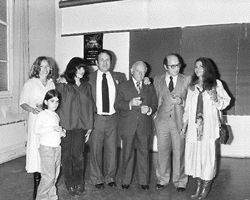
During the period 1970-1985, Roland established himself as one of the world's leading researchers in applied mathematics and scientific computing. His work may be subdivided as follows:
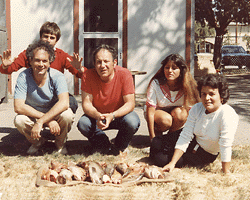
In the course of his career, Roland has authored or co-authored over two hundred scientific articles and six books, and he has served as an editor for more than twenty scientific reviews and anthologies. He has received invitations to lecture at universities and scientific institutions world-wide, and he has been the featured speaker at numerous scientific congresses.
Roland's achievements have been recognized by many accolades and honors. Among these are: Invited Speaker at the International Congress of Mathematicians in 1983, the Seymour Cray Prize in 1988, and the Grand Prix Marcel Dassault de l'Académie des Sciences in 1996. He was elected Corresponding Member of the French Academy of Sciences in Mechanical Sciences in 1987, member of Academica Europaea (European Academy of Sciences) in 1988, and was a Sherman Fairchild Distinguished Visiting Scientist at the California Institute of Technology in 1988-89. He holds several distinctions, including Médaille d'Argent de la Ville de Paris, 1980; Officier de l'Ordre National du Mérite, 1988; and Chevalier de l'Ordre des Palmes Académiques, 1995.
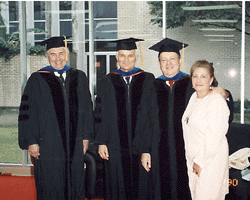
Throughout his career, Roland has developed innovative and clever numerical methods not only as a scientist but as an outstanding engineer with a great concern for the validation of numerical results with experimental tests. In this particular place of Renaissance, we believe that Leonardo's words are singularly appropriate here:
"To me it seems that those Sciences are vain and full of error which are not
born of experience, mother of all certainty, first hand experience which in its
origin, or means, or end has passed through one of the five senses."
Leonardo da Vinci (1452-1519) (Trattato della Pittura, Notes on Painting).